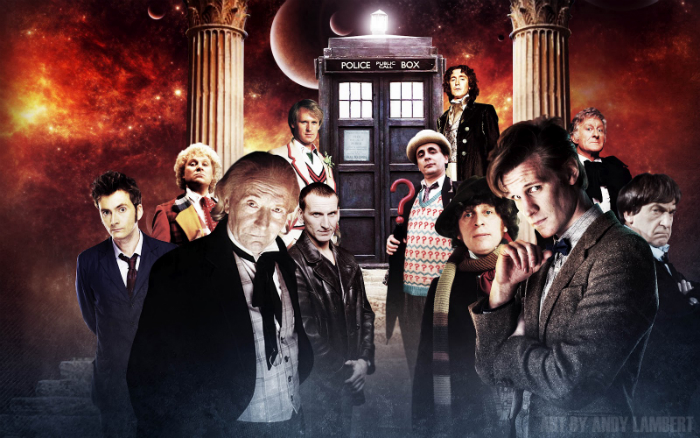You knew it was coming.
I’ve written about science fiction and animated Netflix offerings in this column for the last year as well as similar geek-centric topics in larger pieces for the Tribune. So you had to assume that at some point I would get around to writing about one of the most classic and venerable of all science fiction franchises, Doctor Who.
And on the verge of the Doctor’s 50th Anniversary event, that time is now.
The Doctor first hit the BBC in 1963, eventually entrenching itself as a part of British pop culture and as science fiction royalty. The classic era remained in production until 1989 with a TV movie in 1996, then returned for the new era in 2005. A Time Lord who travels through space and time in his TARDIS, the Doctor has the ability to regenerate his body when near death. It makes an excellent plot device for writers to cover up the recasting of the lead character, which is about to happen again.
Christopher Eccleston.
David Tennant.
Matt Smith.
These are the Doctors of the modern era born in 2005, the era now available on Netflix. While there is a small selection of classic Doctor Who available, virtually the entire modern era up to the mid-season seven finale is now available to stream on Netflix, no doubt made available in time to catch up on the Doctor’s recent adventures before The Day of the Doctor hits TV screens and theatres later this month.
The modern era has been criticized by some for “dumbing itself down” to appeal to a larger audience after the classic run of the series was taken out of production. While it is a different look at concept, the new era is by no means dumb. It’s still inventive, engaging and dynamic, always offering something new and different to take in. That’s no small feat for a show that’s been around for as long as Doctor Who.
The new era also offers an obvious starting point for new fans. While I’ve enjoyed re-watching classic episodes, it’s a lot of work to do that. Of the 26 seasons that were made prior to 2005, approximately 97 of those episodes are currently missing. They’ve slowly been tracking them down but this leaves gaps in the history. Starting with season, or series, one of the new era gives fans just discovering Doctor Who a clear point to begin with. Hopefully, this leads to looking back at the classic series.
Naturally, there are a few episodes in the new era that are highlights, keeping in mind that you’d be better served watching them in order.
Series 1, Episode 9, “The Empty Child” & Episode 10, “The Doctor Dances” – Eccleston’s Doctor and his companion arrive in 1941 London during the Blitz. What’s great about two part story is the introduction of Captain Jack Harkness, played by John Barrowman, a great character that appears numerous times throughout the modern era and spins off into his own series, Torchwood.
Series 2, Episode 6, “Rise of the Cybermen” & Episode 7, “The Age of Steel” – This is the return of one the Doctor’s greatest foes, the Cybermen, with David Tennant’s Doctor taking them on.
Series 6, Episode 7, “A Good Man Goes to War” – Matt Smith’s Doctor chases after his missing companion with the help of her husband, calling in favours and allies to wage war. The opening of this episode is prime example of why you don’t screw with the Doctor. It also features a massive reveal that answers one big question in the Matt Smith era.
[related_content slugs=”navigating-netflix-semi-pro,navigating-netflix-conan-the-barbarian,navigating-netflix-harold-and-kumar-go-to-white-castle,navigating-netflix-jumanji” description=”More Navigating Netflix” position=”right”]
“The Day of the Doctor” will pop up on November 23rd. Whether you catch it at home or in theatres, it will be a key moment in the history of this venerable science fiction franchise. And this is your chance to find out what all the fuss is about.
–
Ian Goodwillie is a columnist for the Spectator Tribune. Follow him on Twitter at @ThePrairieGeek and on Tumblr at iangoodwillie.tumblr.com.
